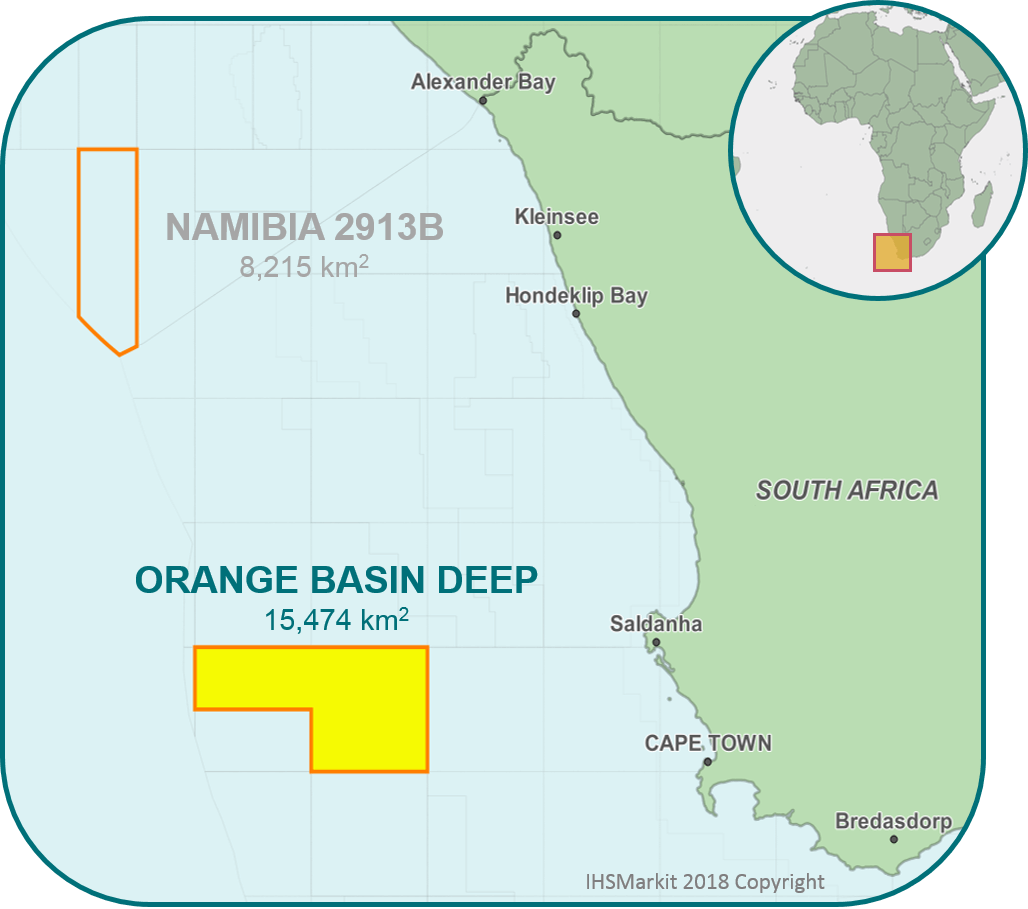×


Over the past few years, the Namibian Orange Basin has emerged as an exciting new oil province and subsequently a provider of significant new demand and future demand potential for deepwater drilling rigs.
According to Westwood’s Wildcat, “the Upper and Lower Cretaceous plays opened in the Namibian Orange Basin by the Venus and Graff wells in 2022, have delivered nearly 5bnbbl after the first nine wells, making it the second largest oil province to have emerged globally in the last decade”.
Furthermore, the seven exploration wells that followed up the Graff and Venus play opening discoveries have resulted in four follow-on discoveries with an estimated recoverable oil resource of 2.8bnbbl. This includes Galp Energia’s Mopane discoveries made in 2024 at an estimated 2.4bnbbl. If verified, this would make Mopane the largest ever discovery in sub-Saharan Africa and the third largest oil discovery globally in the last decade.
Growing Namibian floating rig demand
Pre-2021, demand for rigs in Namibian waters was limited to say the least. Only eight semisubmersible (semi) or drillship contracts were awarded for drilling off the West African country between 2006 and 2018, resulting in the drilling of nine high-impact exploration wells and zero commercial discoveries. Chariot Energy, HRT, Repsol, Sintezneftgaz and Tullow Oil all took a stab at exploring the Namibe, Luderitz and Orange Basins off the country, with no material success during this period.
These rig deals were awarded to an array of different deepwater rig providers including Pride International, Diamond Offshore, Transocean, Rowan and Ocean Rig to name a few and during that 12-year period rig days off Namibia totalled approximately 820 days or 2.2 years of rig demand.
However, the market for deepwater rigs in this new province since 2022 has been increasing off the back of giant new discoveries. Despite no rigs currently working offshore, Westwood expects to see a few begin new programmes in the coming months, while the long-term outlook is very promising.
Since August 2021, there have been 15 new contracts awarded or exercised contract options taken up, equating to approximately 1,700 days (or 4.4 years) of rig demand for operators to conduct work offshore Namibia. Supermajors, Shell and TotalEnergies, have been most active in contacting rigs, securing 80% of the firm rig time for Namibian operations since 3Q 2021. Galp Energia, with its successful campaign in PEL 83 using Odfjell Drilling-managed semi Hercules (10,000′), accounted for 10% of the total.
Meanwhile two upcoming exploration campaigns with new players – Chevron and Rhino Resources – makes up the remaining 10% of contracted rig time to date. In 4Q this year, Chevron will undertake a one-well exploration campaign in PEL 90 using Odfjell-managed harsh-environment UDW semi Deepsea Bollsta (10,000′) a rig tried and tested by Shell for its Namibian campaign that ran from December 2022 through April 2024. Kapana and Maguni have been dubbed as potential drill targets. Rhino will also start a minimum two-well campaign in the final quarter of this year, using UDW drillship Noble Venturer (12,000′), with Sagittarius or Volans as likely prospects.

TotalEnergies is expected to return to exploration and appraisal drilling at its acreage in the coming months, with plans to drill the Kokerboom prospect in PEL 56, but which rig it plans to use is yet to be confirmed. The operator currently has UDW drillship Tungsten Explorer (10,000′) booked in under a 10-year deal for which it can utilise it in different countries, while it still has UDW semi Deepsea Mira (10,000′) on hire until at least January 2025 this year with a further one-well option remaining on the deal. Both rigs are currently working off the Congo but had previously been drilling in Namibian waters.
In addition, TotalEnergies seems likely to be the first off the block to develop its new finds, with a final investment decision expected for Venus in 2025, which will require further drilling of subsea wells to be tied back to an FPSO.
Meanwhile, Shell has taken a hiatus from its drilling activities in PEL 39 and has not reported any further exploration or appraisal plans at this point.

Drilling rigs contracted to work offshore Namibia 2002-2024 (contracts fixed as of 31 July 2024). Source: Westwood RigLogix
Further rig deals on the horizon
In addition to the firm backlog already in place, Galp Energia plans to drill up to four wells around its Mopane Complex, with the first well to spud before the close of 2024. Market sources indicate that the operator may be close to securing a sublet on a drillship already located in West African waters for the first well of its campaign, though this is yet to be confirmed by either party.
BW Energy also intends to drill two firm wells within PL003 next year; the first to be drilled since taking operatorship in 2017. The wells are expected to appraise Kudu and target a shallower Upper or Lower Cretaceous oil exploration target. A tender for a drillship or semi is expected to hit the market in August 2024. Kudu was the only significant hydrocarbon discovery made offshore Namibia prior to Venus and Graff.
Meanwhile, Woodside is yet to decide on its option to farm into PEL 87, containing the Saturn prospect, after carrying the cost of 3D seismic over the block in May 2023.
Alongside average global rig dayrates, Namibian rig contracts have been getting more expensive due to the ongoing market recovery. As an example, Tullow Oil and Chariot Oil & Gas paid $120,000 and $130,000 per day, respectively, for their short Namibian campaigns in 2018 with then Ocean Rig-owned drillship Ocean Rig Orion (10,000’).